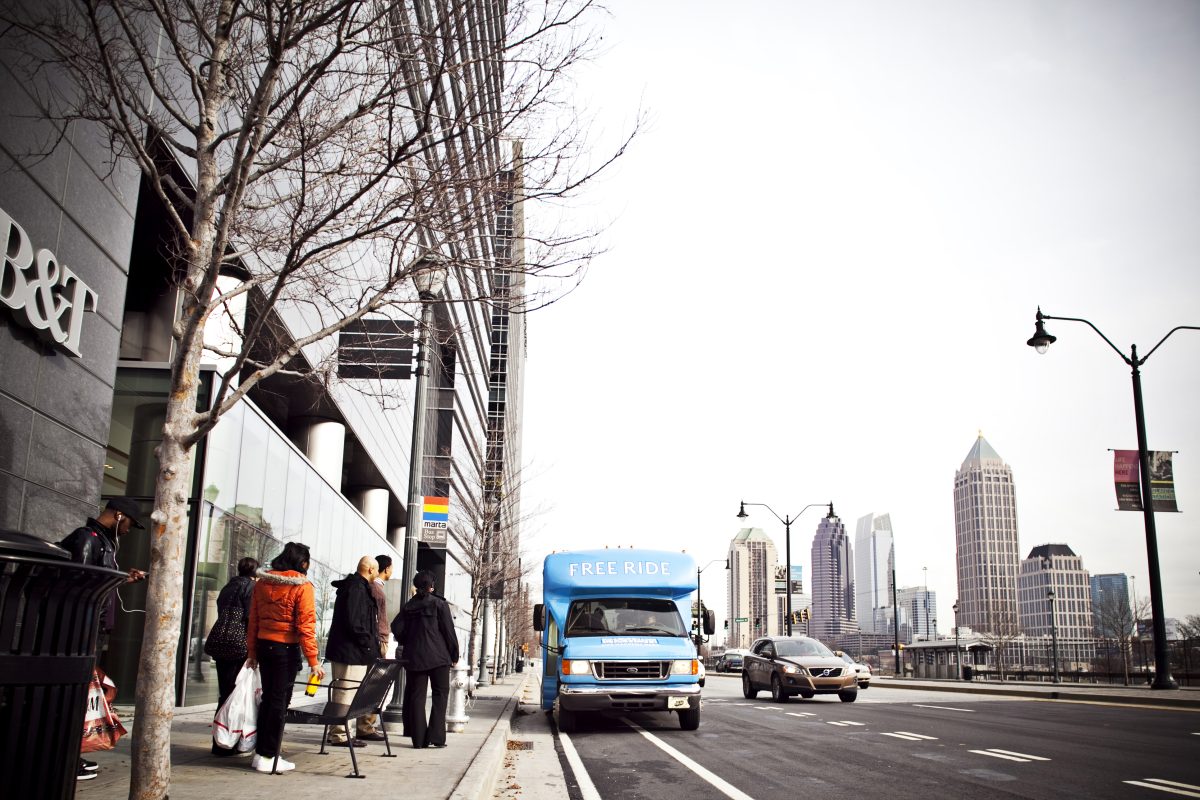We know you’re anxious to start shopping, dining, or hanging out at Atlantic Station. How will you get there? What’s the trip like? Read this beginner’s guide to Atlanta’s local transit solution—MARTA—and the free ASAP Shuttle to get yourself there in a snap.
What’s the best way to get to Atlantic Station?
Skip the traffic: you can get to Atlantic Station easily by taking MARTA rail and the ASAP shuttle. Use the MARTA trip planner to find an easy route to the Arts Center train stop, the closest stop to Atlantic Station.
Once you exit the train at Arts Center, head to the bus loop to catch the free ASAP shuttle. Just look for the signs at its pickup point on the loop, then wait up to 15 minutes. Track the shuttle’s live location and view the route map here.
How do I pay for MARTA?
Get a MARTA Breeze card on your phone by downloading the Breeze 2.0 mobile app, or in person at any MARTA train station. Each ride costs $2.50 and includes a free transfer onto MARTA buses as you exit the station (or vice versa).
To get your Breeze card at the station, use the self-service Breeze card vending machines by the entryway. There, you can get a temporary Breeze ticket for $1 or a reusable Breeze card for $2. Then, you can pre-pay for as many trips as you’ll need.
Buy a Breeze ticket if…
- You’re only in Atlanta for a short time—they expire after 90 days.
- You won’t need to reload the fare on your ticket.
- You plan on taking a day’s worth or less of MARTA trips.
Buy a Breeze card if…
- You’ll need to ride MARTA for multiple days.
- You want to reload your fares as you go.
- You’ll want to check how much fare is on your card at breezecard.com.
How do I get on the MARTA train?
Once you’ve got your Breeze Card, enter the station by tapping it at the turnstile. Keep it handy—you’ll need to tap again to leave.
Take the Red or Gold line towards Arts Center Station. Depending on where you’re at, you’ll need to take the North or South-bound train. Use the MARTA trip planner to check your route, or one of the route maps at the MARTA station.
MARTA trains usually run about every 20 minutes. Keep an eye on your train’s estimated arrival time with the digital screens above each stop.
When the train arrives, hop on and relax until Arts Center is announced! You can watch for the next stop displayed in the front of each car.
Where do I get off?
The ASAP shuttle runs from MARTA’s Arts Center station. Click here for the station’s latest arrival times, plus what’s available at your stop.
How do I take the ASAP shuttle?
Once you exit the train at MARTA’s Arts Center station, follow the Bus and Shuttle signs to the free ASAP shuttle. Just look for the ASAP signs at its pickup point, then wait up to 15 minutes! Track the shuttle’s live location and view the route map here.
To reach Atlantic Station, get off at Atlantic Drive, the second stop. The retail, restaurants, and events will be waiting right ahead.
Where do I go from here?
Heading out? We’ve got you covered. Use our map of the Atlantic Station area and transit routes to find your next destination or follow these steps to an Atlanta hot spot:




